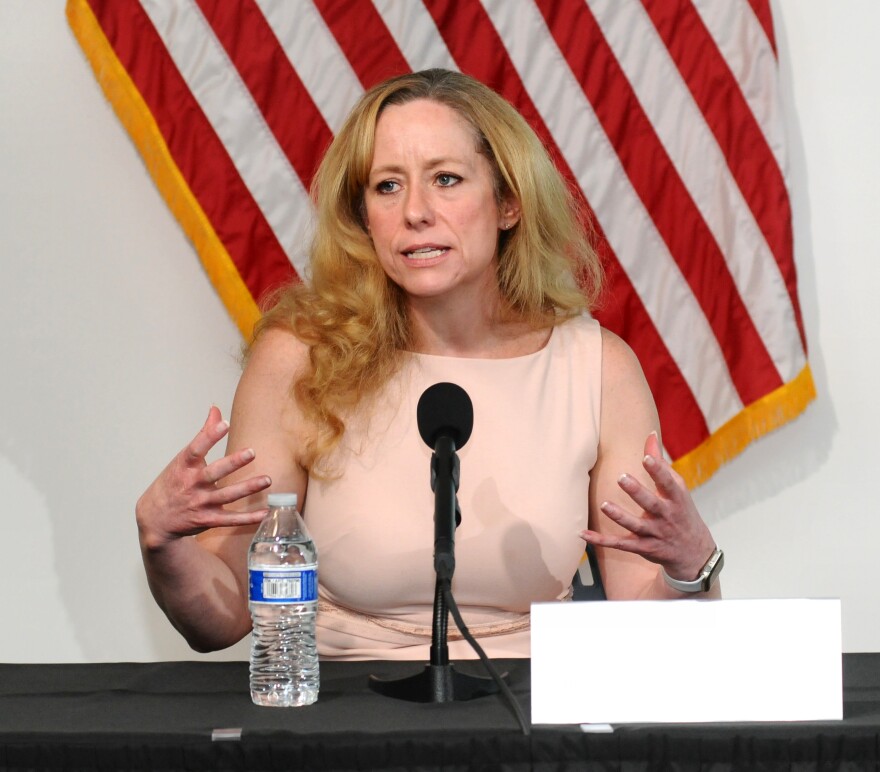By Howard Fischer
Capitol Media Services
PHOENIX -- The state's top health official said Friday the anticipated approval of the new Johnson & Johnson vaccine could be a "game changer'' in the fight against COVID-19.
Cara Christ said she hopes to get another 50,000 to 60,000 doses as early as this coming week now that an advisory panel of the U.S. Food and Drug Administration on Friday recommended approval, paving the way for the agency's go-ahead to start shipping it. And that will be on top of what the state already is receiving in doses of the Pfizer and Moderna vaccines.
The new vaccine does not have as high a rate of total disease prevention as the other two. They are considered 95% effective after the second dose.
By contrast, the Johnson & Johnson is considered 85% effective against the most severe cases and just about 66% at preventing moderate cases.
But Christ pointed out that it has been found to be 100% effective at preventing hospitalization and death. That is significant in dealing with a disease that has killed close to 15,900 Arizonans and more than 500,000 nationwide.
More significant, Christ said, is the fact that this is a single-dose vaccine.
That, she said, makes it particularly useful for populations that, for one reason or another, may have difficulty returning for the second dose. Ditto, she said, for individuals who may prove hard to find again.
And then there's the fact that the storage requirements are less stringent than those sub-zero requirements for Pfizer and Moderna, with results saying it could remain stable in a refrigerator for months.
"This would be a great thing for doing mobile vaccination, especially out in rural communities,'' she said. "You only have to go once and they are considered a completed dose.''
All this comes as the health department shows that about 1.16 million people have received at least one dose of either the Pfizer or Moderna two-dose regimen. That comes out to close to 16% of the state population.
Out of that, nearly 500,000 are considered fully vaccinated against COVID-19.
As far as when everyone else will get vaccinated, that is more complex.
The first issue is supply.
By the end of the current week, Christ said the state hopes to have received close to 1.96 million doses of vaccine. That includes what appears to be a big spike in Pfizer doses, having gone from about 86,000 a week before the middle of February to close to 130,000 now.
But there's less there than meets the eye.
Christ explained that health care providers are routinely able to get six doses out of what are supposed to be five-dose vials. So now when they get a shipment they now are counting each vial as six, a 20% increase.
Still, she said, the state is getting more overall volume.
The other issue is who is entitled to get in line for a vaccine.
Most of the state is in the priority stage where the doses are reserved for health care workers, those in the education and child care fields and adults age 65. But Christ expects most counties to move into the next phase soon.
That category includes adults with high-risk medical conditions who live in congregate care settings like assisted living facilities and nursing homes.
What it also includes are what the state identifies as "essential workers.''
Some of these are obvious, including those who work for utilities and grocery stores as well as transportation workers and funeral home employees.
But some are not.
For example, that category also includes anyone who works at a bank. Auto shop workers and gas station employees also are here. In fact, so are "communication workers'' like reporters.
Of note is that all these people are a higher priority than adults of any age with high-risk medical conditions.
Christ said the recommendations come from the state's Vaccine and Antiviral Prioritization Advisory Committee.
"They look at the benefit versus the risk of who's getting vaccinated and when the vaccine in limited,'' she said. "When you look at people that continue to have to go to work and have direct interaction with the public -- and they can be any age range -- we do know that those people are going to be at increased risk for potentially catching and then transmitting COVID-19.''
And then there's the other side of the equation.
"In order for our community to function, those jobs are essential to make sure that people can eat, can get to work, can continue to function,'' Christ added. "And that's why the essential workers are prioritized before those with health care conditions.''





